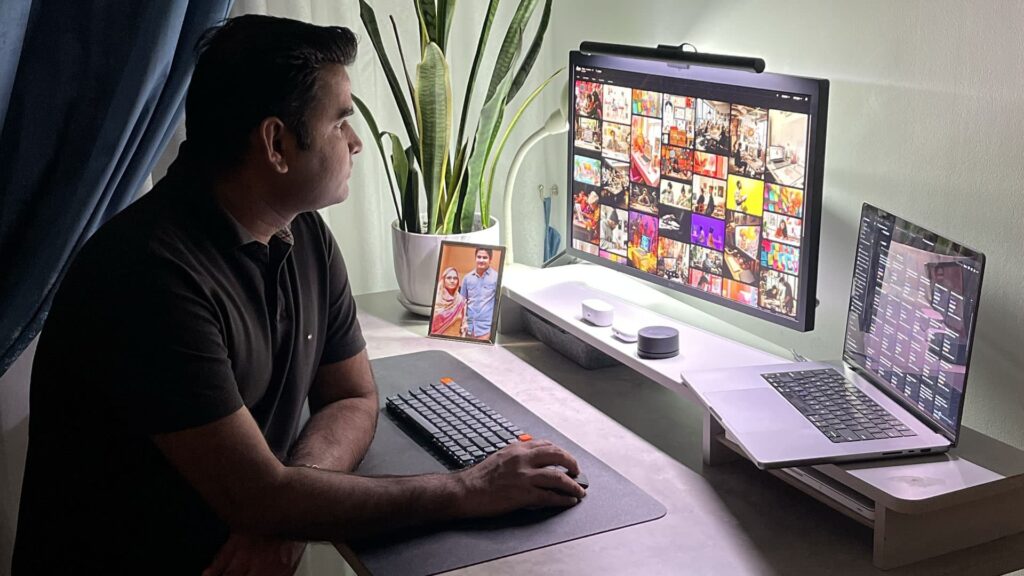We’ve all been there. That moment when you’re staring at your proposal, cursor hovering over the pricing section, wondering if you should lower your rates “just this once” to win the project. As a designer with over a decade in the industry, I made this mistake early in my career – and learned some invaluable lessons along the way.
The temptation of lower rates
It seems logical at first.
Lower rates = more clients = more work = more money, right?
This simple equation lured me into what I now call the “discount trap.” Fresh from completing several successful projects, I still found myself struggling to maintain a steady client flow. The market seemed crowded, and potential clients were constantly comparing prices.
So I did what many designers do: I lowered my rates.
The real cost of charging less
What followed was a harsh lesson in the hidden costs of undervaluing your work. Here’s what actually happened:
1. The quality of clients changed
Remember that client who haggled over every minor revision? Or the one who expected 24/7 availability because they were “paying good money” – despite the discounted rate?
These weren’t coincidences. By lowering my rates, I had inadvertently attracted clients who:
- Prioritized cost over quality.
- Often required more revisions and management.
- Were less likely to value professional expertise.
- Frequently questioned design decisions based on personal preferences rather than user needs.
2. The work became less fulfilling
Lower rates meant I needed more projects to maintain my income, leading to:
- Rushed work to meet overlapping deadlines.
- Less time for research and ideation.
- Compromised quality due to time constraints.
- Burnout from juggling too many projects.

Building a value-based practice
Value-based pricing isn’t just about numbers – it’s about understanding and communicating your true worth:
- Calculate your actual hourly cost (including overhead, tools, and professional development).
- Factor in your expertise and specialized skills.
- Consider the value your work brings to clients’ businesses.
- Include time for project management and communication.
Stand firm on pricing
When I started standing firm on my rates, something interesting happened:
- Clients began taking my proposals more seriously.
- Project discussions focused on value rather than cost.
- I attracted clients who respected professional boundaries.
- The quality of my portfolio improved significantly.
Building a strong portfolio
Instead of competing on price, focus on showcasing your expertise:
- Document case studies that highlight problem-solving abilities.
- Include metrics and results from successful projects.
- Share your design thinking and process.
- Keep your portfolio updated with your best work only.
Nurturing client relationships
Quality relationships proved far more valuable than temporary price advantages:
- Invest time in understanding client goals and challenges.
- Provide strategic insights beyond just design work.
- Maintain professional communication and boundaries.
- Follow up after project completion for testimonials and referrals.

Investing in growth
The money and time saved from not taking underpaid work should go into:
- Skill development and certifications.
- Better tools and resources.
- Networking and industry events.
- Creating content and sharing knowledge.
Practical steps to raise your rates
- Audit your current pricing
- Review your last 10 projects.
- Calculate your effective hourly rate.
- Identify which projects were most profitable and why.
- Develop a new pricing strategy
- Research market rates for your expertise level.
- Create packages that reflect different service levels.
- Include value-added services in your offerings.
- Communicate your value
- Prepare case studies showing ROI.
- Develop a clear value proposition.
- Practice discussing rates with confidence.
Moving forward
Remember: Clients who understand and value quality work exist in every market segment. Your job is not to compete with the lowest bidder but to demonstrate why working with you is a smart investment.
Bonus tips for success
- Create a rate card buffer Always have room to negotiate without compromising your minimum acceptable rate. I typically add 20% to my target rate, giving me flexibility while protecting my bottom line.
- Document your wins Keep a “wins folder” with client testimonials, successful project outcomes, and positive feedback. This becomes invaluable when discussing rates with new clients and builds your confidence in maintaining higher rates.
The journey to charging what you’re worth isn’t just about making more money – it’s about building a sustainable practice that allows you to do your best work.
When you value yourself appropriately, you create space for creativity, growth, and genuine impact in your clients’ businesses.
Remember: The right clients don’t just pay your rates, they appreciate the value you bring to their projects. Stand firm in your worth, and the right opportunities will follow.
What pricing challenges have you faced in your design career?
How did you overcome them?
Share your experiences in the comments below or connect with me on LinkedIn.








